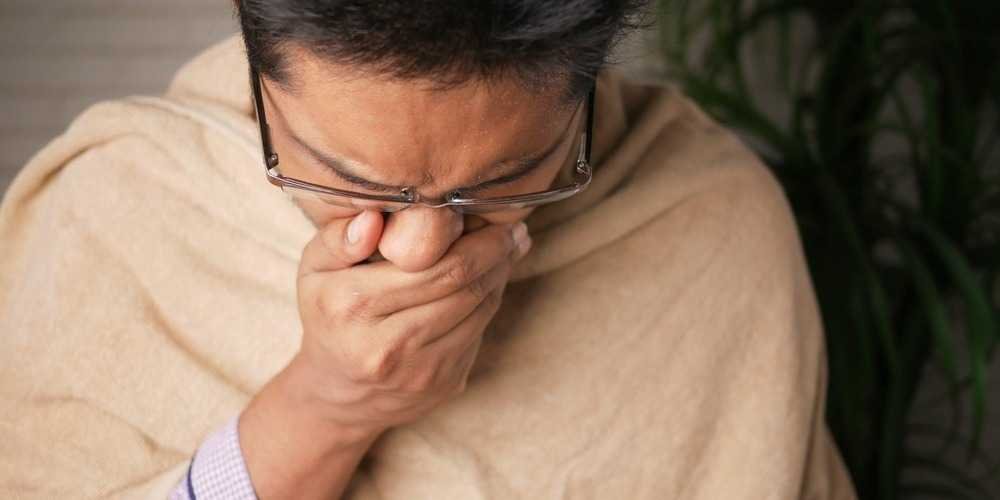
Do Young People Get Lung Cancer? Will Lung cancer Recur After Surgery? 5 Common Myths About Lung Cancer
According to the latest data from the World Health Organization (WHO), lung cancer ranks first among cancer deaths worldwide. Don’t young people get lung cancer? Will lung cancer relapse after surgical treatment? “Hello Doctor” has compiled the five most common myths about lung cancer and dispelled them one by one for you.
5 myths about lung cancer
However, many people think that only smoking can cause lung cancer, and the early symptoms are usually not obvious. Therefore, patients are easy to ignore the condition and delay seeking medical treatment. It is not until the late-stage symptoms of lung cancer worsen that they discover that they have lung cancer. The reason why many people ignore their condition is also caused by the following five major myths:
Can you get lung cancer only if you smoke?
Regardless of whether people have the habit of smoking, they must prevent and treat lung cancer. Not smoking is a very important key to maintaining lung health.
However, long-term smoking is indeed one of the main causes of lung cancer, but it is not the only cause. In addition to smoking and second-hand smoke, living in an air polluted environment, being exposed to heavy metal substances (such as cadmium, chromium, arsenic, etc.), having a history of lung-related diseases or a family history of lung cancer, or even not using a range hood when cooking , long-term inhalation of oil fumes will increase the risk of lung cancer.
Young people don’t get lung cancer?
Lung cancer has tended to trend younger in recent years, with patients aged 50 to 70 being the most common, but about 7% are under 40 years old, and the youngest case is even 26 years old.
Quitting smoking before the age of 30 can reduce the risk of lung cancer by about 90%. In addition, you should also avoid indoor air pollution, change cooking methods, use low-oil cooking, and maintain good ventilation in the kitchen; wear a mask when going out. Especially when air pollution is severe, you should avoid engaging in strenuous exercise outdoors.
People can start adding lung cancer screening to their health check-up program at the age of 45. If you have a family history of lung cancer, you need to be more vigilant. You can arrange for a lung cancer screening 10 years earlier based on the average age at which lung cancer occurs in your family, so as to facilitate early diagnosis and treatment and prevent the progression of lung cancer.

Lung cancer is more common in men. If you don’t smoke or cook, you won’t get it?
In the past 30 years, the incidence of lung cancer has increased by 2.8 times among male patients, and by as much as four times among female patients. Among them, 20% of men suffering from lung cancer have never smoked, and up to 90% of women have never smoked.
However, even if you do not smoke or cook, it does not mean that you will not develop lung cancer. If you are exposed to second-hand smoke or air pollution for a long time, or even in a situation full of organic compounds (such as burning coal, burning incense), you may develop lung cancer. Increase the chance of developing lung cancer.
According to research results published by the Academia Sinica in 2020, it was found that among all lung cancer patients, 74% of young women (less than 60 years old) who had never smoked and all female patients without lung cancer epidermal growth factor receptor (EGFR) mutations had APOBEC mutations. The high degree of signature indicates that the mutation signature of APOBEC may be a driver of early lung cancer in women.
In addition, studies have also found that exposure to carcinogens (such as second-hand smoke, third-hand smoke, oil smoke, metal compounds, etc.) may also cause genetic mutations, with higher levels of mutations in women over 70 years old. Therefore, people should reduce their exposure to carcinogens in their lives to effectively prevent lung cancer.
Is chest X-ray enough for lung cancer screening?
Through chest X-ray photography, you can see whether there are any obvious abnormalities in the lungs, such as various lung diseases such as pneumonia, tuberculosis, lung cancer, emphysema or pneumothorax.
Because lung cancer is difficult to detect in its early stages, tiny lesions smaller than 1 cm cannot be detected by chest X-ray examination alone. The lesions may also grow behind the heart, in the diaphragm, or overlap with the shadow of the ribs, causing detection blind spots.
It is recommended that high-risk groups such as long-term smokers, family history of lung cancer, and lung diseases can seek medical treatment regularly and undergo low-dose computed tomography (LDCT) examinations to detect lung nodules as small as 0.3 cm, and follow the The size of the nodule and the pattern of the examination images can be used to evaluate the possibility of benignity and malignancy and provide physicians with a reference.

4 groups at high risk of lung cancer: regular screening can save a life
The following four high-risk groups for lung cancer may consider receiving low-dose computed tomography screening to facilitate early detection of lung nodules and regular examinations to effectively control the disease:
- People aged between 50 and 80 years old, with a smoking history of more than 30 packs per year (including those who have quit smoking for less than 15 years).
- People with a family history of lung cancer.
- Those with a history of lung disease (such as tuberculosis, chronic obstructive pulmonary disease).
- Workers who are exposed to radon gas environments or in specific workplace environments (such as those in the metal industry, metallurgical industry, petrochemical industry, asbestos contacts, or those who are exposed to dust, oil fumes, cotton wool, chemicals, radiation, etc. for a long time) can consult a doctor. Screening is required.
Will lung cancer relapse after surgical treatment?
Currently, clinical doctors will consider factors such as the type of cancer cells, disease stage, and physical condition of patients with lung cancer, and use different treatment methods, including surgical resection, radiation therapy, chemotherapy, targeted therapy, or combination therapy.
Most people think that lung cancer patients can be effectively cured by removing tumors through lobectomy, wedge and subsection resection, or pneumonectomy without recurrence. In fact, whether it is non-small cell lung cancer (lung adenocarcinoma, squamous cell carcinoma, or large cell carcinoma) or small cell lung cancer, surgical resection can only reduce the possibility of recurrence, but it does not mean that it will not happen. relapse.
Especially for late-stage non-small cell lung cancer and small cell lung cancer, most cancer cells are usually found to have spread to the mediastinal lymph nodes or lateral lungs, or have metastasized to distant organs, such as the trachea, heart and other organs. Therefore, even after surgical treatment, And combined with chemotherapy or radiotherapy, it is not completely effective in curing lung cancer.
Taking small cell lung cancer as an example, about 60 to 70% of patients have metastasized to other organs when they seek medical diagnosis, making it impossible to remove the lesions in the body through surgery. Since they are prone to recurrence, very few patients survive more than 5 years. Very few, less than 5%.
The public is reminded that if you are in a high-risk group for lung cancer, please schedule regular lung cancer screenings to detect lesions early and treat them as early as possible to prevent tumor progression or metastasis.











